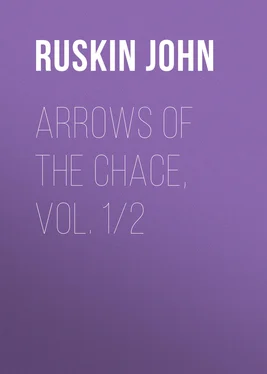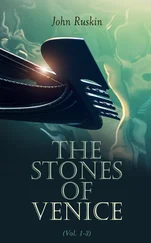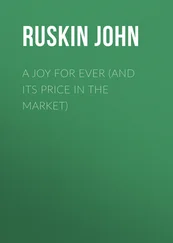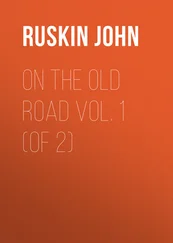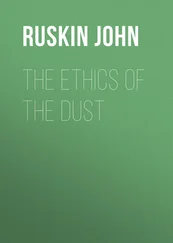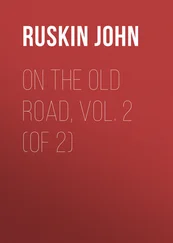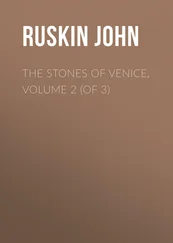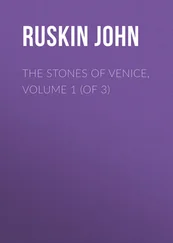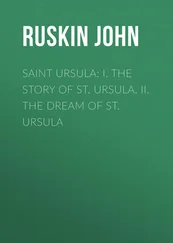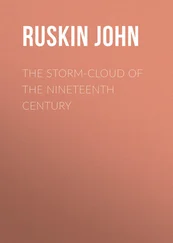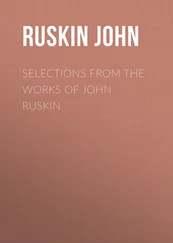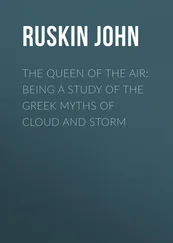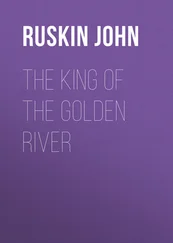John Ruskin - Arrows of the Chace, vol. 1/2
Здесь есть возможность читать онлайн «John Ruskin - Arrows of the Chace, vol. 1/2» — ознакомительный отрывок электронной книги совершенно бесплатно, а после прочтения отрывка купить полную версию. В некоторых случаях можно слушать аудио, скачать через торрент в формате fb2 и присутствует краткое содержание. Жанр: Биографии и Мемуары, literature_19, foreign_antique, на английском языке. Описание произведения, (предисловие) а так же отзывы посетителей доступны на портале библиотеки ЛибКат.
- Название:Arrows of the Chace, vol. 1/2
- Автор:
- Жанр:
- Год:неизвестен
- ISBN:нет данных
- Рейтинг книги:5 / 5. Голосов: 1
-
Избранное:Добавить в избранное
- Отзывы:
-
Ваша оценка:
- 100
- 1
- 2
- 3
- 4
- 5
Arrows of the Chace, vol. 1/2: краткое содержание, описание и аннотация
Предлагаем к чтению аннотацию, описание, краткое содержание или предисловие (зависит от того, что написал сам автор книги «Arrows of the Chace, vol. 1/2»). Если вы не нашли необходимую информацию о книге — напишите в комментариях, мы постараемся отыскать её.
Arrows of the Chace, vol. 1/2 — читать онлайн ознакомительный отрывок
Ниже представлен текст книги, разбитый по страницам. Система сохранения места последней прочитанной страницы, позволяет с удобством читать онлайн бесплатно книгу «Arrows of the Chace, vol. 1/2», без необходимости каждый раз заново искать на чём Вы остановились. Поставьте закладку, и сможете в любой момент перейти на страницу, на которой закончили чтение.
Интервал:
Закладка:
Fourthly. Where the faculty for art was special, it ought to be carried forward to the study of design, first in practical application to manufacture, then in higher branches of composition. The general principles of the application of art to manufacture should be explained in all cases, whether of special or limited faculty. Under this head we may at once get rid of the third question stated in the first page—how to detect special gift. The power of drawing from a given form accurately would not be enough to prove this: the additional power of design, with that of eye for color, which could be tested in the class concerned with manufacture, would justify the master in advising and encouraging the youth to undertake special pursuit of art as an object of life.
It seems easy, on the supposition of such a course of study, to conceive a mode of examination which would test relative excellence. I cannot suggest the kind of questions which ought to be put to the class occupied with sculpture; but in my own business of painting, I should put, in general, such tasks and questions as these:
(1) “Sketch such and such an object” (given a difficult one, as a bird, complicated piece of drapery, or foliage) “as completely as you can in light and shade in half an hour.”
(2) “Finish such and such a portion of it” (given a very small portion) “as perfectly as you can, irrespective of time.”
(3) “Sketch it in color in half an hour.”
(4) “Design an ornament for a given place and purpose.”
(5) “Sketch a picture of a given historical event in pen and ink.”
(6) “Sketch it in colors.”
(7) “Name the picture you were most interested in in the Royal Academy Exhibition of this year. State in writing what you suppose to be its principal merits—faults—the reasons of the interest you took in it.”
I think it is only the fourth of these questions which would admit of much change; and the seventh, in the name of the exhibition; the question being asked, without previous knowledge by the students, respecting some one of four or five given exhibitions which should be visited before the Examination.
This being my general notion of what an Art-Examination should be, the second great question remains of the division of schools and connection of studies.
Now I have not yet considered—I have not, indeed, knowledge enough to enable me to consider—what the practical convenience or results of given arrangements would be. But the logical and harmonious arrangement is surely a simple one; and it seems to me as if it would not be inconvenient, namely (requiring elementary drawing with arithmetic in the preliminary Examination), that there should then be three advanced schools:
A. The School of Literature (occupied chiefly in the study of human emotion and history).
B. The School of Science (occupied chiefly in the study of external facts and existences of constant kind).
C. The School of Art (occupied in the development of active and productive human faculties).
In the school A, I would include Composition in all languages, Poetry, History, Archæology, Ethics.
In the school B, Mathematics, Political Economy, the Physical Sciences (including Geography and Medicine).
In the school C, Painting, Sculpture, including Architecture, Agriculture, Manufacture, War, Music, Bodily Exercises (Navigation in seaport schools), including laws of health.
I should require, for a first class, proficiency in two schools; not, of course, in all the subjects of each chosen school, but in a well-chosen and combined group of them. Thus, I should call a very good first-class man one who had got some such range of subjects, and such proficiency in each, as this:
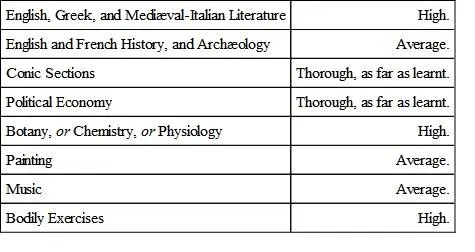
I have written you a sadly long letter, but I could not manage to get it shorter.
Believe me, my dear Sir, Very faithfully and respectfully yours, J. Ruskin.Rev. F. Temple.
Perhaps I had better add what to you, but not to every one who considers such a scheme of education, would be palpable—that the main value of it would be brought out by judicious involution of its studies. This, for instance, would be the kind of Examination Paper I should hope for in the Botanical Class:
1. State the habit of such and such a plant.
2. Sketch its leaf, and a portion of its ramifications (memory).
3. Explain the mathematical laws of its growth and structure.
4. Give the composition of its juices in different seasons.
5. Its uses? Its relations to other families of plants, and conceivable uses beyond those known?
6. Its commercial value in London? Mode of cultivation?
7. Its mythological meaning? The commonest or most beautiful fables respecting it?
8. Quote any important references to it by great poets.
9. Time of its introduction.
10. Describe its consequent influence on civilization.
Of all these ten questions, there is not one which does not test the student in other studies than botany. Thus, 1, Geography; 2, Drawing; 3, Mathematics; 4, 5, Chemistry; 6, Political Economy; 7, 8, 9, 10, Literature.
Of course the plants required to be thus studied could be but few, and would rationally be chosen from the most useful of foreign plants, and those common and indigenous in England. All sciences should, I think, be taught more for the sake of their facts, and less for that of their system, than heretofore. Comprehensive and connected views are impossible to most men; the systems they learn are nothing but skeletons to them; but nearly all men can understand the relations of a few facts bearing on daily business, and to be exemplified in common substances. And science will soon be so vast that the most comprehensive men will still be narrow, and we shall see the fitness of rather teaching our youth to concentrate their general intelligence highly on given points than scatter it towards an infinite horizon from which they can fetch nothing, and to which they can carry nothing.
[From “Nature and Art,” December 1, 1866.]
ART-TEACHING BY CORRESPONDENCE
Dear Mr. Williams: 32 32 This letter was, it appears, originally addressed to an artist, Mr. Williams (of Southampton), and was then printed, some years later, in the number of Nature and Art above referred to.
I like your plan of teaching by letter exceedingly: and not only so, but have myself adopted it largely, with the help of an intelligent under-master, whose operations, however, so far from interfering with, you will much facilitate, if you can bring this literary way of teaching into more accepted practice. I wish we had more drawing-masters who were able to give instruction definite enough to be expressed in writing: many can teach nothing but a few tricks of the brush, and have nothing to write, because nothing to tell.
With every wish for your success,—a wish which I make quite as much in your pupils’ interest as in your own,—
Believe me, always faithfully yours, J. Ruskin. Denmark Hill, November, 1860 .II.
PUBLIC INSTITUTIONS AND THE NATIONAL GALLERY
[From “The Times,” January 7, 1847.]
DANGER TO THE NATIONAL GALLERY. 33 33 Some words are necessary to explain this and the following letter. In the autumn of 1846 a correspondence was opened in the columns of The Times on the subject of the cleaning and restoration of the national pictures during the previous vacation. Mr. (afterwards Sir Charles) Eastlake was at this time Keeper of the Gallery, though he resigned office soon after this letter was written, partly in consequence of the attacks which had been made upon him. He was blamed, not only for restoring good pictures, but also for buying bad ones, and in particular the purchase of a “libel on Holbein” was quoted against him. The attack was led by the picture-dealer, and at one time artist, Mr. Morris Moore, writing at first under the pseudonym of “Verax,” and afterwards in his own name. He continued his opposition through several years, especially during 1850 and 1852. He also published some pamphlets on the subject, amongst them one entitled “The Revival of Vandalism at the National Gallery, a reply to John Ruskin and others” (London, Ollivier, 1853). The whole discussion may be gathered in all its details from the Parliamentary Report of the Select Committee on the National Gallery in 1853.
Интервал:
Закладка:
Похожие книги на «Arrows of the Chace, vol. 1/2»
Представляем Вашему вниманию похожие книги на «Arrows of the Chace, vol. 1/2» списком для выбора. Мы отобрали схожую по названию и смыслу литературу в надежде предоставить читателям больше вариантов отыскать новые, интересные, ещё непрочитанные произведения.
Обсуждение, отзывы о книге «Arrows of the Chace, vol. 1/2» и просто собственные мнения читателей. Оставьте ваши комментарии, напишите, что Вы думаете о произведении, его смысле или главных героях. Укажите что конкретно понравилось, а что нет, и почему Вы так считаете.
